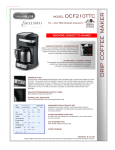Download M700 Helium Compressor - Pascal Technologies, Inc
Transcript
User’s Manual Oxford Instruments Austin Inc. M700 Helium Compressor Issue 20 / January 2013 / Original User’s Manual i Issue 20 / Jan 2013 / M700 User's Manual M700 Helium Compressor Oxford Instruments Austin Inc. is a wholly-owned subsidiary of Oxford Instruments. For information about Oxford Instruments, visit the Oxford Instruments website at: http://www.oxford-instruments.com How to Contact Technical Support: For contact information and a complete listing of Direct Sales, Distributor, and Sales Representative contacts, visit the Oxford Instruments Austin Inc. website at: http://www.oxford-instruments.com/businesses/austin-scientific Oxford Instruments Austin Inc. has made its best effort to ensure that the information contained in this document is accurate and reliable. However, the information is subject to change without notice and is provided “AS IS” without warranty of any kind, expressed or implied. Before placing orders, customers are advised to obtain the latest version of relevant information to verify that information being relied upon is current and complete. All products are sold subject to the terms and conditions of sale supplied at the time of order acknowledgment, including those pertaining to warranty, patent infringement, and limitation of liability. No responsibility is assumed by Oxford Instruments Austin Inc. for the use of this information, including use of this information as the basis for manufacture or sale of any items, or for infringements of patents or other rights of third parties. These documents are the property of Oxford Instruments Austin Inc. and by furnishing this information, Oxford Instruments Austin Inc. grants no license, expressed or implied, under any patents, copyrights, trademarks, trade secrets, or other intellectual property rights of Oxford Instruments Austin Inc., the copyright owner of the information contained herein, gives consent for copies to be made of the information only for use within the customer’s organization as related to the use of Oxford Instruments Austin Inc. products. The same consent is given for similar information contained on any Oxford Instruments Austin Inc. website or disk used to distribute information to a customer. Oxford Instruments Austin Inc. does give consent to the copying or reproduction by any means of the information contained herein for general distribution, advertising or promotional purposes, or for creating any work for resale. The names of products of Oxford Instruments Austin Inc. or other vendors and suppliers appearing in this document may be trademarks or service marks of their respective owners that may be registered in some jurisdictions. A list of Oxford Instruments Austin Inc. trademarks and service marks can be found at: http://www.oxford-instruments.com/businesses/austin-scientific Oxford Instruments Austin Inc. 1340 Airport Commerce Drive Bldg 1, Ste. 175 Austin, Texas 78741 USA TEL. +1 512 441 6893 FAX +1 512 443 6665 Sales E-mail: [email protected] Support E-mail: [email protected] i Issue 20 / Jan 2013 / M700 User's Manual M700 Helium Compressor This page was intentionally left blank. ii Issue 20 / Jan 2013 / M700 User's Manual M700 Helium Compressor List of Contents List of Figures...................................................................................................... iv List of Tables ....................................................................................................... iv 1.0 Revision History........................................................................................ vi 2.0 Preface.......................................................................................................1 2.1. About Oxford Instruments Austin Inc. .................................................1 2.2. Other Services from Oxford Instruments .............................................1 2.3. About this Manual ................................................................................2 3.0 Safety Warnings........................................................................................3 3.1. Standards for Use of Warnings and Cautions......................................3 3.2. Warnings Applicable to All Aspects of M700 Operation ....................3 3.2.1. High Voltage and Electrical Shock Warnings ................................... 3 3.2.2. High Pressure Related Warnings......................................................... 3 3.2.3. Helium Gas-Related Warnings ............................................................. 4 3.2.4. Heat-Related Warnings ......................................................................... 4 3.3. Operator Instructions ............................................................................4 4.0 Introduction ..............................................................................................5 4.1. General Information about the Model M700 Compressor .................5 4.1.1. Model M700 Features ............................................................................ 5 4.1.2. Overview of Model M700 Compressor Design and Operation .... 5 4.1.3. Description of Subsystems .................................................................... 6 4.1.4. Operational Flow .................................................................................... 8 4.2. Specifications.........................................................................................8 4.3. Ordering Information ...........................................................................9 5.0 Installation ..............................................................................................10 5.1. Safety Warnings ..................................................................................10 5.2. Installation Steps .................................................................................10 5.2.1. Unpacking and Inspection .................................................................. 10 5.2.2. Mounting the Compressor.................................................................. 11 5.2.3. Preparing the Compressor for Operation ....................................... 11 5.2.4. Installation.............................................................................................. 12 5.2.4.1. Ambient Conditions and Coolant Connection........................... 12 5.2.4.2. Verifying and/or Refilling Compressor with Helium Gas......... 13 5.2.4.3. Connecting the Helium Flex Lines................................................. 14 5.2.5. Electrical Connection ........................................................................... 15 6.0 Operation ................................................................................................16 6.1. Before Switching On the System ........................................................16 6.2. Normal Operation ...............................................................................16 6.2.1. Cycle Times ............................................................................................. 17 6.3. Electronics Interface Connections ......................................................17 iii Issue 20 / Jan 2013 / M700 User's Manual M700 Helium Compressor 6.3.1. J1 Remote Interface ............................................................................. 17 6.3.2. D-sub User Controls.............................................................................. 17 6.3.3. D-sub User Status .................................................................................. 18 6.3.4. Compressor Front Panel user Interface............................................ 19 6.3.5. Compressor Operational Checks ....................................................... 20 6.3.6. Compressor System Shutdown........................................................... 20 6.3.7. Compressor Interfaces ......................................................................... 20 6.3.7.1. Serial Port Interface.......................................................................... 20 6.3.8. Serial Port Settings ............................................................................... 21 6.3.9. Communications Protocol................................................................... 21 6.3.9.1. Serial Port Commands...................................................................... 22 7.0 Troubleshooting .....................................................................................24 7.1. Troubleshooting Activities..................................................................24 8.0 Maintenance ...........................................................................................26 8.1. Maintenance Personnel Requirements ..................................................26 8.2. Removing the Compressor from Service: Removal, Transport and Storage...............................................................................................................26 8.3. Scheduled Preventative Maintenance Activity......................................26 8.3.1. Remove the Compressor Adsorber ................................................... 27 8.3.2. Install Replacement Adsorber............................................................ 28 8.4. Unscheduled Corrective Maintenance ...............................................28 8.4.1. Removing Helium Contamination .................................................... 29 8.5. Cleaning Equipment............................................................................29 8.6. Returning Equipment..........................................................................30 List of Figures Figure 1 - Temperature vs. Recommended Water Flow Rate............................. 12 Figure 2 – 24VAC Control Transformer Settings: Left photo is for 380/400 volt configuration, Right photo is of 460/480 volt configuration (factory setting for high voltage models)................................................................................................................. 15 Figure 3 - User Control Signal Interface........................................................................... 18 Figure 4 - User Status Signal Interface. ............................................................................ 19 Figure 7 - Model M700 General Dimensions. .................................................................. 32 Figure 8 – 91-00101-000 High Volt STD Drive Electrical Box Schematic........... 33 Figure 9 - 91-00102-000 High Volt MRI Drive Electrical Schematic ................... 34 List of Tables Table 1 - Description of Model M700 Helium Compressor Subsystems........................... 7 Table 2 - Fuse Table for Model M700 Helium Compressor. ............................................. 8 Table 3 - Power Requirements for Model M700 Helium Compressor............................... 8 iv User's Manual Issue 20 / Jan 2013 / M700 M700 Helium Compressor Table 4 - Model M700 Helium Compressor Specifications. .............................................. 9 Table 5 - Model M700 Helium Compressor Pressure Requirements. ................................ 9 Table 6 - Model M700 Helium Compressor Ordering Information. .................................. 9 Table 7 - Optional Accessories and Replacement Parts. .................................................. 10 Table 8 - J1 Remote Connector (25-pin D-sub)................................................................ 17 Table 9 - M700 Operational Checks................................................................................. 20 Table 10 - Serial Port Interface (J2 RS232)...................................................................... 21 Table 11 – M700 Serial Port Settings. .............................................................................. 21 Table 12 - M700 Serial Port Commands. ......................................................................... 22 Table 13 - M700 Data Message. ....................................................................................... 22 Table 14 - M700 Command/Data. .................................................................................... 23 Table 15 - M700 Error Codes. .......................................................................................... 23 Table 16 - M700 Troubleshooting Procedures. ................................................................ 25 v Issue 20 / Jan 2013 / M700 User's Manual M700 Helium Compressor 1.0 Revision History Date Revision Description of Change JAN 2013 A Production Release Document Number 9797-0005300053-000 vi Issue 20 / Jan 2013 / M700 User's Manual M700 Helium Compressor 2.0 Preface 2.1. About Oxford Instruments Austin Inc. Oxford Instruments Austin Inc., a wholly-owned subsidiary of oxford Instruments, specializes in the manufacture and repair of cryogenic cryopumps, cryocoolers (refrigerators) and helium compressors for semiconductor, optical coating, linear accelerators, medical equipment, and R&D applications. You can find just what you need from our range of products and support services: • New equipment – cryopumps, compressors, cryocoolers, and cryopump controllers such as the Model M700 Helium Compressor described in this manual. • Comprehensive range of accessories for the installation of whole system and a complete range of spare parts to repair cryopumps and compressors. 2.2. Other Services from Oxford Instruments Oxford Instruments Austin Inc. offers comprehensive refurbishment services for its own equipment as well as for that of most of our competitors. Our products and services are available through our global network of agents and dealers. • Repair and refurbishment services – We offer our own quality products, and well as most models from other manufacturers, often with off-the-shelf availability. • Exchanges – We offer our own quality products, as well as most makes of cryopumps and helium compressors, which are refurbished and fully warranted. • Technical support – Our support engineers will help determine if your cryopump system is operating correctly so that you can get your system back to optimum efficiency as soon as possible. o To contact Oxford Instruments Austin Inc. Technical Support: Email: [email protected] Telephone: 1-512-441-9258 or Toll Free: 1-800-404-1055 • Installation – On-site installation services are available to guarantee performance. • Training – We offer on-site training to help you and your staff to know more about your cryopump and compressor systems. Our training will give you confidence and the ability to maintain a highest possible uptime for your system. 1 User's Manual Issue 20 / Jan 2013 / M700 M700 Helium Compressor 2.3. About this Manual The purpose of this manual is to provide our customers using the Model M700 Helium Compressor with the information needed to safely and efficiently operate the compressor when operating as part of a cryogenic refrigeration system. Such a system is often comprised of the following equipment: • Model M700 Helium Compressor • Coldhead(s) or Cryopumps • Connecting Helium Lines • Connecting Water Lines This manual describes the design, operation and maintenance of the Model M700 Helium Compressor. 2 Issue 20 / Jan 2013 / M700 User's Manual M700 Helium Compressor 3.0 Safety Warnings 3.1. Standards for Use of Warnings and Cautions Warnings are noted when there is a possibility of injury or death to persons operating the equipment or performing specific tasks or procedures noted in this manual. Cautions are noted when there is a possibility of damage to equipment if the caution is ignored. 3.2. Warnings Applicable to All Aspects of M700 Operation 3.2.1. High Voltage and Electrical Shock Shock Warnings Warning: Potentially fatal voltages are present in the compressor unit. The compressor should be switched off and disconnected from its power supply before carrying out any troubleshooting or maintenance activities on the unit. Warning: Connect Connect or disconnect the flex lines joining the compressor and its load (cryopump, coldhead, etc) only after the compressor and its load are switched off and separated from the power source. Otherwise, electrical shock hazards may exist, potentially causing damage to the compressor unit, its load, or the operator. Warning: Always provide proper grounding to the compressor unit and its load. All electrical power connection and disconnection of the unit should be done by a qualified electrician. Warning: High voltage is present within the compressor unit and can cause severe injury from electrical shock. Permit only qualified electrical technicians to open the compressor enclosure to perform electrical troubleshooting. Warning: The main power plug is used as the overall disconnect device. Ensure that access to the disconnect device is made available at all times. 3.2.2. Warning: High Pressure Related Warnings High gas pressure is present within the system and may cause severe injury if a safe pressure level is exceeded. exceeded. 3 Issue 20 / Jan 2013 / M700 User's Manual M700 Helium Compressor Warning: Do not charge the compressor without using a pressure regulator. Do not charge the compressor to a pressure level that exceeds limit set by the manufacturer. Warning: The static pressure of a compressor is predetermined by the manufacturer manufacturer based on operational safety and performance considerations. Do not exceed this level when charging a compressor. 3.2.3. Helium GasGas-Related Warnings Warning: Helium gas can cause rapid asphyxiation and death if released in a confined and unun-ventilated area. Warning: Use a pressure reducing regulator when withdrawing helium gas from a highhigh-pressure gas cylinder. 3.2.4. Warning: 3.3. HeatHeat-Related Warnings The compressor motor may become hot during operation. Wait for the motor to cool down before working inside the compressor. compressor. Operator Instructions Follow standard Model M700 Helium Compressor operating procedures as described in this manual. If you still have questions regarding the safe operation of the M700 Helium Compressor, please contact Oxford Instruments Austin Inc. Technical Support using the contact information found in Section 2.2. Warning: If the equipment is used in any manner not specified by the manufacturer, the protection provided by the equipment may be impaired. impaired. Warning: Maintenance personnel must verify safe state of equipment after all repairs. 4 User's Manual Issue 20 / Jan 2013 / M700 M700 Helium Compressor 4.0 Introduction 4.1. General Information about the Model M700 Compressor Oxford Instruments Austin Inc. offers industry-proven compressors such as the Model M700 Helium Compressor described in this manual, at highly competitive prices and with flexible configurations. Included with each order shall be the following: • • • • 4.1.1. Model M700 Helium Compressor Remote connector kit Female charge (¼” Aeroquip to ¼” flare connector) fitting Electronic Compressor Manual Model M700 Features The model M700 Helium Compressor is designed for tens of thousands of hours of continuous operation. The main features of the model M700 Helium Compressor are: • Minimal maintenance requirements • Reliable helium and oil filtration system • Integrated water flow meter • Front-mounted high and low pressure gauges 4.1.2. Overview of Model M700 Compressor Design and Operation The compressor itself consists of five main mechanical components: • Compressor Capsule (motor) • Heat Exchanger • Oil Mist (Vapor) Separator • Bulk Oil Separator • Adsorber 5 User's Manual Issue 20 / Jan 2013 / M700 M700 Helium Compressor The compressor unit and the coldhead are connected by way of helium gas flex lines. The compressor unit, coldhead, and helium lines are fitted with self-sealing couplings, and are charged with ultra high-purity (99.999%) helium gas. Helium gas is pumped through the compressor motor and after being compressed to a higher pressure, a mixture of hot helium and hot oil enters the bulk oil separator. The oil acts (in addition to the primary function as a lubricator) as the medium to remove heat created by compressing the helium gas from the compressor motor. Once exiting the compressor motor, the hot oil/hot helium mixture is pumped via differential pressure through the bulk oil separator separates the vast majority of hot oil and hot helium, such that each medium (helium and oil) enters the heat exchanger through different parallel paths. The heat exchanger removes the heat generated from the process of compressing helium in the capsule. Similar to the bulk oil separator, the helium gas as well as oil is then pumped by way of differential pressure through the water-cooled heat exchanger. The cooled oil returns to the capsule to lubricate and cool the capsule. The second stage of helium gas purifying occurs after the heat removal and cooling process. Helium gas purification must occur because the helium out of the heat exchanger still has a small mount of oil vapor mixed with it. If this helium gas gets to the cryopump with oil vapor in it, the oil will freeze and contaminate the cryopump. The function of the oil mist (vapor) separator is to rid the helium gas stream of this oil vapor. Any oil condensate is then returned to the capsule. Typically, the helium gas still contains a trace amount of oil vapor at this point. The adsorber then filters out the remaining oil vapor from the helium gas stream. Over time, the adsorber will become saturated with the oil vapor. Thus, it is important that the adsorber be replaced according to the recommended replacement interval found in Section 8.3. 4.1.3. Description of Subsystems Along with the five main components, Table 1 describes the subsystems that serve to monitor the operating condition of the compressor unit and ensure its safe operation. 6 Issue 20 / Jan 2013 / M700 User's Manual M700 Helium Compressor Subsystem Name Table 1 - Description of Model M700 Helium Compressor Subsystems. Function Phase rotation monitor Purpose: Monitors the phase of the input power. Will not allow operation if the phase is incorrect. LCD screen will read “Phase Fault” Internal line break motor protector An internal line break motor protector, located in the center of the Y of the motor windings, disconnects all three phases in case of an overload condition. The internal protector protects against single phasing Overload relay Purpose: Monitors system current. Will turn off the compressor if the current level exceeds the preset value of 20 Amps. LCD screen will read “Contactor Error” Thermal switch (TS1) Purpose: Monitors helium temperature upstream of the heat exchanger. Safety Function: Will turn off the compressor if the helium temperature gets above 210°F, and LCD screen will read “Temperature Fault” Thermal Switch (TS2) Purpose: Monitors helium temperature downstream of the heat exchanger. Safety Function: Will turn off the compressor if the helium temperature gets above 140°F, and LCD screen will read “Temperature Fault” Unloading valve Purpose and Safety Function: Equalizes pressure within the compressor unit upon power interruption Oil check valve Purpose and Safety Function: Prevents oil migration when power is off Cooling water flow meter Purpose: Allows a visual reference as to the current flow rate of the cooling water. 1.5 – 2.0 GPM is required. Fuses: Fuses for the main input power Fuses for the control voltage Fuses for the main contactor coil Safety Function: Over-current protection. See Table 2 for list of fuses and their protected circuits. External relief valve Purpose and Safety Function: Opens the helium gas circuit to atmosphere if the helium gas pressure exceeds 430 PSIG Low pressure switch Safety Function: Will turn off the compressor if the Return pressure is equal to or lower than 15 PSIG. LCD screen will read “Pressure Fault” High pressure switch Safety Function: Will turn of the compressor if the Supply pressure is equal to or higher than 410 PSIG. LCD screen will read “Pressure Fault” 7 Issue 20 / Jan 2013 / M700 User's Manual M700 Helium Compressor Table 2 - Fuse Table for Model M700 Helium Compressor. Fuse Protected Circuit F1 Oil Solenoid 2A X F2 Helium Solenoid 2A X F3 Coldhead 3A X F4 Coldhead 3A X F5 Contactor 1.5A X F9 Coldhead 3A X F10 Control 800mA X F11 Fan 2A X F12 Fan 2A X 4.1.4. Fuse Size Amps HV/LV Fuse Type 5/20 MM Operational Flow The flow diagram of the Model M700 Helium Compressor is illustrated in Figure 6. 4.2. Specifications The Model M700 Helium Compressor specifications are listed in Table 3 and Table 4. Model Model M700 Helium Compressor Table 3 - Power Requirements for Model M700 Helium Compressor. Operating AC Max Max Power Frequency Voltage [V] Phase Current [kW] [Hz] (Factory Setting) Draw [A] 380~480 +/-10% (480) 60/50 3 15.6 13 8 Issue 20 / Jan 2013 / M700 User's Manual M700 Helium Compressor Table 4 - Model M700 Helium Compressor Specifications. Feature/Component Specification Description Physical Dimensions See Figure 3-3 Weight 300 lbs Helium Pressure See Table 5 Interface Compressor power cord has bare leads Helium connections: 1/2 inch male Aeroquip couplings 25 Pin Remote RS485 Interface 9 Pin Serial RS232 Interface Electrical Service Breaker 20 Amp minimum Adsorber Replacement Schedule 15,000 Hours (per elapsed time meter on the compressor) or 2 years, whichever comes first Cooling Water 1.5 gallon/minute (5.7 liter/minute) minimum flow rate at 65°F; 2.0 gpm (7.6 lpm) maximum flow rate at 80°F. 80°F (27°C) maximum inlet water temperature Recommended water chiller capacity: 2.5 tons/per compressor unit Water line connector: 3/8 inch Swagelok tube fittings Description Table 5 - Model M700 Helium Compressor Pressure Requirements. Value (PSIG) Value (Bar) Static Pressure @ 60 Hz Operating Pressure (Differential; no load) 4.3. 230 ± 5 15.86 ± 0.34 285 19.65 Ordering Information Table 6 contains the ordering information for the model M700 Helium Compressor unit. Table 6 - Model M700 Helium Compressor Ordering Information. Compressor Configuration Part Number M700 Helium Compressor (HV, Water-Cooled, Solid State STD Drive) 91-00101-000 M700 Helium Compressor (HV, Water-Cooled, MRI Drive) 91-00102-000 Customers can also order the optional accessories and replacement parts listed in Table 7. 9 User's Manual Issue 20 / Jan 2013 / M700 M700 Helium Compressor Table 7 - Optional Accessories and Replacement Parts. Accessories/Replacement Parts Part Number Charcoal Adsorber for M700 Helium Compressor 80-00005-001 Zeolite Adsorber (External, In-line filter. Used for moisture removal in the helium stream) for M700 Helium Compressor 90-10019-000 Helium charge line (10ft.*), with bleeder fitting 10346 Water-filter starter kit (In-line style filter with 50 micron filtering mesh, improves compressor cooling water quality) 99-00110-000 *Custom length/sizes available. 5.0 Installation 5.1. Safety Warnings Review the safety warnings in Section 3.0 before beginning any installation activities. 5.2. Installation Installation Steps 5.2.1. Unpacking and Inspection Once the equipment is received, inspect the exterior of the shipping carton for any visual signs of damage. Report any damage to and file a claim with the shipping company immediately. In addition, at least two “Tip-n-Tell” or “TiltWatch” labels are mounted on the exterior of the shipping carton (two more are mounted on the inside of the compressor unit itself). Inspect these labels carefully before accepting the shipment. Any sign that the package has been mishandled during transit may indicate that the compressor may be damaged due to oil migration within the system. This could cause the unit to overheat and ultimately fail after a short period of operation. The compressor must be returned to the factory for service. Report the mishandling of the package to and file a damage claim with the shipping company immediately. Failure to do so will void the warranty on the compressor. Please also contact Oxford Instruments Austin Inc. Technical Support using the contact information found in Section 2.2. Remove the straps and packaging materials from the compressor container, then lift or roll the unit out of the container carefully. Inspect the exterior of the unit. If any damage is observed, inform the shipping company and Oxford Instruments Austin Inc. Keep the original packaging materials in case the unit needs to be returned to the factory for service. Most shipping companies have a certain grace period for reporting damages due to shipping in order to process the insurance information in a timely manner. Therefore it is 10 Issue 20 / Jan 2013 / M700 User's Manual M700 Helium Compressor highly recommended that the shipping container be opened and the unit inspected immediately whether or not it will be put into operation right away. Caution: Caution: 5.2.2. When transporting or storing the compressor unit, make certain it is not tilted by more than 15 degrees from horizontal level to avoid potential oil migration damage to the compressor. Mounting the Compressor It is highly recommended that the compressor unit be installed on a level and steady surface. If the unit must be installed in a tilted manner, the maximum tilting angle is 5 degrees. Tilting the unit more than this maximum allowable angle could result in damage and contamination in the system, and may void the warranty of the unit. 5.2.3. Preparing the Compressor for Operation 1. Check the voltage of the power source before connecting the main power cable to a suitable connector or disconnect box, making sure that the compressor switch is off. If the voltage of the power source is different from the factory default setting (see Table 3) it may be necessary to change the tap settings on the 24VAC control transformer located inside the electrical box in the compressor. Follow the steps described in Section 5.2.5 to make the change. 2. Cooling water connection: a. Typical municipal drinking water is acceptable, however, a closed loop chilled water source is recommended. Oxford Instruments Austin Inc. recommends that an inline water filter be used on the water supply line to filter out any contaminants before they enter the compressor heat exchanger circuit. See Table 7 for ordering information. b. Minimum water flow rate of 1.6 GPM (6 LPM) is required to achieve a maximum discharge temperature of 100°F (38°C). Ideal discharge temperature is 90°F (32°C). A flow rate of 1.8~2.0 GPM (6.8~7.6 LPM) is recommended. The inlet water temperature should not exceed 80°F (27°C). See Figure 1 for water flow rate curve. 3. Verify that helium pressure is between 230 ± 5 PSIG (at 60 Hz, 220 ± 5 PSIG at 50 Hz). If the pressure is low, refer to Section 5.2.4.2 for charging procedures. 4. Visually inspect the water flow meter for discoloration or sediments, as this would indicate that the water supply may be contaminated. 5. The compressor is now ready to be connected to the cryopump(s) or coldhead(s). 11 Issue 20 / Jan 2013 / M700 User's Manual M700 Helium Compressor Temperature vs. Recommended Water Flow Rate 2 Water Flow Rate (GPM) 1.95 1.9 1.85 1.8 Series1 1.75 1.7 1.65 1.6 65 66 67 68 69 70 71 72 73 74 75 76 77 78 79 80 Temperature (F) Figure 1 - Temperature vs. Recommended Water Flow Rate. 5.2.4. Installation 5.2.4.1. Ambient Conditions and Coolant Connection Ambient Conditions: When the compressor is in operation, the ambient temperature should be within 40°F to 104°F (5°C to 40°C). The compressor unit should be set up in a non-condensing environment. There shall be at least 3 feet (1 meter) of vacant space on either side of the compressor and 1.5 feet (0.5 meters) of vacant space above the compressor to allow for free flow of ambient air. An optimal location would be in a well ventilated (or temperature controlled) location. Coolant Connection: Caution: For waterwater-cooled compressor models, the water used in the unit operation must meet the specifications indicated in in Section 4.2. 4.2. Caution: Failure to comply with the coolant specifications may result in serious damage to the compressor and may void the warranty on the unit. Identify the inlet and outlet connection ports first before connecting the hoses. The water supply line should be connected to the inlet port on the compressor. An in-line water particulate filter is recommended to prevent heat exchanger contamination. 12 Issue 20 / Jan 2013 / M700 User's Manual M700 Helium Compressor Periodically check the coolant flow rate and temperature to ensure the proper operation of the compressor unit. 5.2.4.2. Caution: Verifying and/or Refilling Compressor with Helium Gas All safety regulations related to handling pressurized gas cylinders must be observed. Only use helium with 99.999% or better purity when performing refill operation. The compressor should already be pressurized to 230 ± 5 PSIG upon arrival. However, in the event that the static pressure is too low or too high, steps shall be taken to restore the compressor to the proper helium pressure levels. Examples of situations when the compressor may have lost some pressure include lost pressure due to connecting/disconnecting helium flex lines, or after certain maintenance/clean-up procedure. Therefore, prior to each operation of the compressor, verify that the helium pressure inside the compressor is at the proper levels as stated in Table 4. If the pressure is outside of the required limits, follow the appropriate steps below: Pressure should also be checked after the compressor has been connected to the overall system (as instructed in Section 5.2.4.3), as the static pressure may change based on the overall system pressure after connection. If the helium pressure is too high: 1. Remove the protective cap from the “Return” supply line 2. Slowly connect the female charge fitting. As the connector is tightened, helium pressure will bleed out of the compressor. 3. Continue to bleed out helium gas until the pressure reaches the desired limits defined in Table 4. Once the pressure is reached, disconnect the Aeroquip. 4. Re-install the protective cap. If the helium pressure is too low: 1. Connect a pressure regulator rated at 400 PSIG delivery pressure and a helium charge line to a user-supplied helium supply gas cylinder. Terminate the charge line with the female charge fitting. 2. Set the helium pressure regulator to 10-25 PSIG. Loosen the ¼” flare connector (part of the female charge fitting, in between the helium charge line and the ¼” female Aeroquip adaptor). 3. Allow helium gas to flow though the flex line for a minimum 30 seconds to purge the charge line of air. Tighten the flare connector while venting. After tightening, close the valve on the pressure regulator. 4. Remove the Aeroquip cap of the helium fill/vent fitting on the front of the compressor. 5. Tighten female charge fitting on the end of the helium charge line to the gas fill/vent Aeroquip fitting of the compressor. 13 Issue 20 / Jan 2013 / M700 User's Manual M700 Helium Compressor 6. Set the pressure regulator to approximately 270 PSIG and slowly open the valve on the pressure regulator. When the helium supply pressure gauge reaches the specified limits found in Table 4, tightly close the regulator valve. 7. Ensure the regulator valve is tightly closed. Shut off the helium pressure regulator on the helium bottle. 8. Remove the female charge fitting and reinstall the Aeroquip cap onto the compressor. Caution: 5.2.4.3. Caution: If the compressor pressure drops over a period of time, either when not in operation or without the lines being connected/disconnected, this may be an indication that there is a leak along the helium circuit (compressor, lines, coldhead/cryopump). If that is the case, do not just keep refilling the system system with helium gas. Such leaks will introduce ambient air/moisture and cause contamination in the helium stream. This will result in catastrophic failure of the whole cryogenic system if not properly addressed. Contact and report the leak to Oxford Instruments Instruments Austin Inc. immediately using the contact 2.2. . information found in Section 2.2. Connecting the Helium Flex Lines Connect or disconnect the helium flex lines only when the power to the compressor unit unit is switched off. Never twist or kink the helium flex lines during the installation process. Before connecting the helium flex lines, follow these steps: 1. Identify the helium “Return” (low pressure) and “Supply” (high pressure) ports on the compressor front panel. 2. Clearly mark the helium flex line that will be used to connect to the corresponding “Supply” and “Return” port on the cryopump or coldhead. Note: The helium flex lines are equipped with selfself-sealing couplings which can be connected or disconnected disconnected without helium escaping. Follow these steps to connect the helium flex lines: 1. Unscrew the protective caps from the couplings and keep the caps for future use. 2. Check the couplings for cleanness. When necessary, use lint-free clean cloth or soft brush to clean the couplings. 3. Check the flat seals on the male couplings and make sure they are properly placed. Replace any missing or defective seals. 4. Use only the open-wrenches supplied with the installation kit or equivalent wrenches. For a ½” coupling, tighten with a 1-3/16” wrench and stabilize with a 1” wrench. 5. Tighten down all couplings as far as possible and then back off by one quarter turn to relieve strain. 14 Issue 20 / Jan 2013 / M700 User's Manual M700 Helium Compressor If the flex lines need to be bent to a radius less than 8” (20 cm), then a 90 degree helium elbow needs to be installed. Contact Oxford Instruments Austin Inc. using the contact information found in Section 2.2. Some installations may require different accessories to be installed in line with the helium flex lines, such as the OI Zeolite Adsorber. To connect these accessories, follow the instructions listed above and any other applicable user manual associated with the accessory. To connect to an OI Zeolite Adsorber, follow instructions 1-5 above. Proper installation of the adsorber shall be between the supply port of the compressor and the helium flex line. Note that there is no defined orientation (inlet/outlet) of the adsorber, and either end of the adsorber may be connected to the supply port on the compressor. 5.2.5. Caution: Electrical Connection Before connecting power to the compressor unit, make sure the factory setting of the operating voltage matches that of the power supply where the unit is being installed. Failure to do so will result in performance performance degradation of the system. If the voltage of the power source is different from the factory default setting (see Table 3), it may be necessary to change the tap settings on the 24VAC control transformer located inside the electrical box of the compressor. Follow the steps described below to make the change: 1. Unscrew the wrap around top cover of the compressor. 2. Unscrew the electrical box cover 3. Change the taps on the 24VAC control transformer to the setting that is closest to that of the power source (illustrated in Figure 2). 4. Re-install the electrical box cover and secure using the screws removed in step 2. 5. Re-install the wrap around top cover and secure using the screws removed in step 1. Figure 2 – 24VAC Control Transformer Settings: Left photo is for 380/400 volt configuration, Right photo is of 460/480 volt configuration (factory setting for high voltage models). 15 Issue 20 / Jan 2013 / M700 User's Manual M700 Helium Compressor 6.0 Operation 6.1. Before Switching On the the System After the compressor unit and its load (cryopump, coldhead, etc) are installed and connected, check the helium gas pressure as indicated by the pressure gauges mounted on the front panel of the compressor unit. Refer to Section 4.2 for the proper static pressure readings for the compressor. An LCD screen is located on the front panel display of the compressor. The LCD screen will display all system information, including the reason for any unexpected compressor shut down (temperature fault, pressure fault, phase fault, system error, etc.). The screen will also state the condition of the coldhead/cryopump (on or off). If the helium pressure needs to be adjusted, refer to Section 5.2.4.2 for procedures to adjust the helium pressure inside of the compressor. 6.2. Normal Operation The load of the compressor can be powered through the power connectors located on the front panel of the compressor. To start operation of the compressor and its load, do the following: 1. Open the water supply line. 2. Switch on the main power source. 3. Once the scrolling marquee on the LCD screen has finished, press the ON button (green) on the front panel to start the compressor. 4. Press the OFF button (red) on the front panel to stop the compressor. Allow water to circulate through the compressor for a minimum of 10 minutes before shutting off the water flow. 5. For automated/remote compressor start/stop operation, refer to Section 6.3. During operation, check the water flow rate and the operating pressure frequently. Refer to Table 4 for required water flow rate and operating pressures. If necessary, stop the compressor and adjust the helium pressure (see Section 5.2.4.2). If pressure drop-off occurs frequently, a substantial leak may be in the helium circuit. In this case, stop operation and contact Oxford Instruments Austin Inc. customer service immediately (see Section 2.2). Note: During shut down, the compressor motor may reverse rotate as the pressures equalize internally through the scroll members of the motor. This will cause the compressor compressor to emit a “shuttering” sound. This reversal of direction has no effect on the compressor durability and is entirely normal. 16 Issue 20 / Jan 2013 / M700 User's Manual M700 Helium Compressor 6.2.1. Cycle Times There is no set answer to how often the cryogenic compressor can be started and stopped in an hour. Oxford Instruments Austin Inc. recommends a maximum of twelve cycles per hour. One critical consideration is a minimum run time required to return oil to the compressor after start up. To assure proper oil return, one minute is the minimum run time and four minute minimum off cycle (restart between shut-downs) for all cryogenic compressors. 6.3. Electronics Interface Connections 6.3.1. J1 Remote Interface The Model M700 Helium Compressor provides a D-sub 25-pin connector for remote interface control and status collection. Pin assignments can be found in Table 8. Pin Number Table 8 - J1 Remote Connector (25-pin D-sub). Assignment Pin Number Assignment 1 No Connect 14 No Connect 2 No Connect 15 No Connect 3 Reset 16 Pressure Alarm 4 Cold Head ON/OFF 17 Phase Error 5 No Connect 18 Temp Alarm 6 Compressor ON/OFF 19 Run Status (Compressor ON = ‘1’) 7 No Connect 20 No Connect 8 No Connect 21 No Connect 9 No Connect 22 No Connect 10 No Connect 23 No Connect 11 No Connect 24 Ground 12 No Connect 25 +24V Input 13 No Connect 6.3.2. D-sub User Controls The model M700 Helium Compressor input signals (pins 3,4,6) require a user slide switch or opto-coupler as shown in the figure below: 17 Issue 20 / Jan 2013 / M700 User's Manual M700 Helium Compressor Figure 3 - User Control Signal Interface. Example: to start the compressor connect pin 6 to pin 24. To start coldhead, connect pin 4 to pin 24. 6.3.3. D-sub User Status The Model M700 Helium Compressor output status signals (pins 16-19) are designed to drive a user side opto-coupler as shown in the figure below: 18 Issue 20 / Jan 2013 / M700 User's Manual M700 Helium Compressor Figure 4 - User Status Signal Interface. Example: To monitor the run status of the compressor, connect the output from pin 19 to pin 25. This output can be input to a PLC or LED monitor to indicate the compressor is running. 6.3.4. Compressor Front Panel user Interface On startup, the Model M700 Helium Compressor front panel LCD will display the title screen and revision information. Once initialization is complete, the main screen is displayed. Note: If the phases are not connected properly, a “Phase Error” will be displayed. The compressor cannot be started until the unit is powered down and the phase error is corrected. The compressor provides 3 buttons and a 2-line display for easy operation: • Off • On • Menu Pressing the “Off” button from any screen results in powering the compressor off. The “On” button powers the compressor on, but only if all operational checks are passed. If a system error occurs, pressing the “Menu” button displays the status of each system check. If 19 Issue 20 / Jan 2013 / M700 User's Manual M700 Helium Compressor all operational checks are successful, pressing the “Menu” button displays the operating hours on the compressor. If a system check is in the failed state, the “On” button is ignored. 6.3.5. Compressor Operational Checks The following table lists all of the compressor operational checks and the cause of a failed operational check. Table 9 - M700 Operational Checks. Fault System Interlock Helium Pressure Alarm Pressure alarm contact is not CLOSED. Verify pressure contact. Helium Temperature Alarm Temperature alarm contact is not CLOSED. Verify temperature contact. Phase Error There is a phase fault. Verify proper phase. Contactor Alarm Contactor overload tripped. 6.3.6. Compressor System Shutdown Shutdown Manual shutshut-down Push the OFF button Automatic shutshut-down The following system indication will cause the compressor to automatically shut down: 1. Low Helium pressure 2. High Helium pressure 3. High Helium temperature 4. Contactor Overload 5. Loss of phase 6. High Coldhead Drive Motor Controller Temperature If an automatic shut down occurs, refer to Table 9 to identify and remove the fault. Once the fault has been corrected, the user can restart the system by pressing the “ON” button. 6.3.7. Compressor Interfaces 6.3.7.1. Serial Port Interface The Model M700 Helium Compressor provides a DB9 Male connector for serial port communications. A “straight through” serial cable, as shown in the table below, is necessary for interfacing to the serial port. Only pins 2, 3, and 5 are required. 20 Issue 20 / Jan 2013 / M700 User's Manual M700 Helium Compressor Table 10 - Serial Port Interface (J2 RS232). Pin Assignment DB9 Female (to Compressor) DB9 (to Controller) 1 ----------- 1 2(TxD) ----------- 2(RxD) 3(RxD) ----------- 3(TxD) 4 ----------- 4 5(Gnd) ----------- 5(Gnd) 6 ----------- 6 7 ----------- 7 8 ----------- 8 9 ----------- 9 6.3.8. Serial Port Settings The following table lists the serial port settings. Parameter Table 11 – M700 Serial Port Settings. Value Baud Rate 4800 Data Bits 8 Parity NONE Start Bits 1 Stop Bits NONE 6.3.9. Communications Communications Protocol • • • • No handshaking PC is always the host. Commands and data requests from host. Message Format: o Byte 1: STX (02h = control-B) o Bytes 2..4 Command or data request o Bytes 5..X Command or requested data o Byte X+1 (Carriage Return = 0Dh) • • • All bytes are ASCII type (20h...7Fh) Maximum value for X is 126. Individual data values are separated by a forward slash 21 Issue 20 / Jan 2013 / M700 User's Manual M700 Helium Compressor • • • Used letters are ASCII capitals. Used numbers are ASCII decimals. Incorrect formats are ignored 6.3.9.1. Serial Port Commands The serial port commands are provided below: Table 12 - M700 Serial Port Commands. No. of Bytes Description Command Send: STX SYS1 CR 1+4+1 Turn System On Receive: STX SYS2 CR 1+4+1 System Error Command Table 13 - M700 Data Message. No. of Bytes Description Send: STX DAT CR 1+3+1 Receive: STX DAT 0.00 000000 12345 000000000000000 003 1 1+3 4+1 6+1 5+1 15 3+1 1+1 1 1+1 0000 00 1000000000000000 4 2+1 16+1 4 CR 1 Data request SW Version Reserved Hours Counter Reserved On Timer(seconds) Status: 0 = Off 1 = On 2 = System Error Compressor Status: 0 = Off 1 = On Reserved Number of active errors 1 = active error 0 = error inactive Number of errors logged (≤ 8) End of message 22 Issue 20 / Jan 2013 / M700 User's Manual M700 Helium Compressor Table 14 - M700 Command/Data. Description Send Compressor STX SYS x CR STX SYS y CR X = Y = 0 Off X = Y = 1 On Y = 2 System Error STX SC x y CR STX SC x y CR X = 1 Cold Head Y = 1 On Y= 0 Off STX DAT CR As described in previous table Data Requested STX ERR CR STX ERR xx hhhhh / xx hhhhh / xx hhhhh CR (Will display last 8 error codes) xx = error code hhhhh = hours counter Examples: STX SYS1 CR - Turns the compressor on. The system will respond with SYS1. STX SYS0 - Turns the compressor off. SXT 11 CR – Turns the coldhead on. The compressor will return SC11. (Note the compressor must be running to turn the coldhead on.) Error Code Table 15 - M700 Error Codes. Display Description 1 System Error Error has occurred 2-3 Reserved 4 Contactor Error Compressor overload relay has tripped off. 5 Phase/Fuse Error Line voltage out of phase and/or fuses blown 6 Pressure Fault Low or high pressure switch tripped 7 Temperature Fault Thermal Switch has tripped due to coolant supply failure 8-16 Reserved Refer to Table 16 for troubleshooting procedures. 23 User's Manual Issue 20 / Jan 2013 / M700 M700 Helium Compressor 7.0 Troubleshooting 7.1. Troubleshooting Activities Table 16 describes some problems that users might encounter while operating the Model M700 Helium Compressor and provides potential solutions to those problems. Additional troubleshooting information can be found in Table 15. If a compressor problem still persists after performing the corrective actions described in this section, please contact Oxford Instruments Austin Inc. Technical Support for further assistance (see Section 2.2). 24 Issue 20 / Jan 2013 / M700 User's Manual M700 Helium Compressor Problem Table 16 - M700 Troubleshooting Procedures. Possible Cause Corrective Action The compressor On/Off switch (SW1) is in the On position but will not start. Compressor stops after several minutes of operation and remains off. 1. No power is coming from the power source. 2. Incorrect or disconnected wiring within the compressor 3. Thermal protection switch (TS1 and/or TS2) is open. 4. High current has tripped the current overload relay. 5. The LCD display goes out when the start button is pressed. 1. Check service fuses, circuit breakers, and wiring associated with the power source. Repair as needed. 2. Check the compressor wiring against the wiring schematic. See Figure 8. 3. Confirm that switch TS1 and/or TS2 is closed. The compressor will display over temperature on the status menu. 4. Reset the current overload relay. 5. Check for the proper transformer wiring. See Figure 8. 1. High temperature of the compressor caused by insufficient cooling water (for water-cooled model), resulting in the opening of thermal protection switches (TS1 and/or TS2). For air-cooled model, the ambient temperature is too high. 2. Insufficient helium static pressure. 3. High temperature helium gas tripped the thermal protection switch (TS1). 4. Low power source voltage. 5. Mechanical seizure. 1. Confirm that sufficient cooling water (for water-cooled model) is flowing to the compressor. For aircooled model, provide additional cooling to the surrounding environment. 2. Add helium, using the procedures described in Section 5.2.4.2. 3. Check for proper cooling of the compressor unit. 4. Confirm that power source voltage is correct. 5. Contact OI Austin Inc. for assistance. 25 Issue 20 / Jan 2013 / M700 User's Manual M700 Helium Compressor 8.0 Maintenance 8.1. Maintenance Personnel Requirements Only trained and qualified personnel should perform the maintenance procedures described in this chapter. All other maintenance work must be performed by Oxford Instruments Austin Inc. personnel in the factory. Please contact Oxford Instruments Austin Inc. to make arrangements for maintenance work (see Section 2.2). 8.2. Removing the Compressor from Service: Removal, Transport and Storage It is recommended that the Model M700 Helium Compressor be removed from service when carrying out the maintenance duties described in Section 8.3. To remove the compressor unit from service, do the following: 1. Turn off the compressor unit by pressing the OFF button. 2. Switch off the main power supply to the compressor. 3. Separate the compressor unit from the main power source. 4. Allow the water to continue to circulate for at least 10 more minutes. 5. Allow the compressor load (cryopump, coldhead, etc) to warm up before detaching the helium flex lines. Caution: Loosening or detaching helium flex lines with the compressor load at low temperature without proper warmingwarming-up can result in loss of helium and/or pressure rise in the the compressor unit beyond its designed maximum pressure level. When transporting the compressor unit, follow these guidelines: 1. Make sure the appropriate protective caps are properly secured before shipping. 2. Always store the compressor unit in a dry place. 3. If a freezing temperature environment is anticipated whether during shipping or under storage, ensure all water in the compressor heat exchanger circuit is properly drained. Caution: 8.3. The compressor unit should never be tilted more than 15 degrees either either during shipping or in storage. Scheduled Preventative Maintenance Activity The only scheduled maintenance required on the Model M700 Helium Compressor is the replacement of compressor adsorber after every 15,000 hours of operation (as indicated on the compressor elapsed time meter) or 2 years, whichever comes first. The compressor elapsed time meter can be accessed via the menu button on the compressor and is read out on the LCD screen. 26 Issue 20 / Jan 2013 / M700 User's Manual M700 Helium Compressor The adsorber is used as the final filter to keep the oil vapor out of the helium gas just before the gas is pumped into the compressor load (cyropump, coldhead, etc.). After about 15,000 hours of operation or 2 years, the effectiveness of the adsorber will decrease and need to be replaced. If not replaced, the oil particles could accumulate on the cold surface of the compressor load, reducing the cooling performance of the overall system. In severe cases of such oil contamination, the load could cease to function completely. To remove and replace the compressor adsorber, follow the steps described in Section 8.3.1 and Section 8.3.2. 8.3.1. Remove the Compressor Adsorber To remove the compressor adsorber: 1. Turn off the compressor and separate it from the main power supply. 2. Remove the top wrap around cover and rear panel from the compressor. 3. Allow sufficient time for the compressor load (cryopump, coldhead, etc.) to warm up to room temperature before detaching the helium flex lines from the compressor. 4. Unscrew the connections between the adsorber-to- oil mist (vapor) separator and the adsorber-to-copper hard line. Use caution so that the copper hard line and the oil mist (vapor) separator do not twist during operation. See below for general guidelines regarding helium flex line disconnections. 5. Remove the four bolts that secure the adsorber to the compressor base. Save all bolts and washers for installation of the new adsorber. 6. Remove the adsorber from the compressor. 7. The removed adsorber can be returned to Oxford Instruments Austin Inc. for refurbishment. The contact information can be found in Section 2.2. To detach the helium flex lines, perform the following: 1. Use two wrenches of the appropriate sizes for to avoid loosening the body of the coupling from its adapter removal (if optional installation kit purchased, utilize the two wrenches from the kit). 2. Hold one wrench tight on the coupling half attached to the rear side of the compressor. 3. Use the other wrench to loosen and disconnect the coupling to the helium supply line. Caution: Detaching helium flex lines with the compressor load at low temperature (i.e. without proper warmingwarming-up) can result in loss of helium and/or pressure rise in the compressor compressor unit beyond its designed maximum pressure level. Note: Unscrew the twotwo-self sealing coupling halves quickly to minimize self-sealing minor gas leakage. See Figure 5 for an illustration of the selfcouplings. 27 Issue 20 / Jan 2013 / M700 User's Manual M700 Helium Compressor Figure 5 - Model M700 SelfSelf-Sealing Coupling in Closed Position. Note: 8.3.2. Image from Aeroquip Catalog. Install Replacement Adsorber To install the replacement adsorber: 1. Remove the dust caps from the self-sealing coupling halves at each end of the replacement adsorber. 2. Check the self-sealing connector flat rubber gasket to make sure that it is clean and properly positioned. 3. Place the adsorber back in the compressor using the bolts and washers set aside during the removal process described in Section 8.3.1. 4. Install the two-self sealing coupling halves quickly to minimize minor gas leakage. 5. Use two wrenches of the appropriate sizes, holding one wrench tight on the coupling half attached to the rear side of the compressor. Use the other wrench to tighten the coupling to the helium supply line. 6. Make the initial turns by hand and then use the wrenches until the fittings bottom out. 7. Make sure the supply pressure is in accordance to the pressures found in Section 4.1.3. If the pressure is either too high or too low, follow the instructions in Section 5.2.4.2 to add helium gas to the compressor. 8. Add 15,000 to the reading of the elapsed time meter and write this number on the decal provided with the replacement adsorber. 9. Re-install the wrap around top cover and real panel that was removed in Section 8.3.1. 10. Restart the compressor. 8.4. Unscheduled Corrective Maintenance The following corrective maintenance activities may be necessary should the helium gas circuit of the Model M700 Helium Compressor becomes contaminated. 28 User's Manual Issue 20 / Jan 2013 / M700 M700 Helium Compressor 8.4.1. Removing Helium Contamination Contamination Helium contamination is usually indicated by irregular, noisy, or intermittent operation (ratcheting), and sometimes the seizure of the coldhead or cryopump drive mechanism. This is caused by the accumulation of frozen contaminants within the compressor load and resulting in interference. The source of the helium contamination is due to either: • • Inadvertent introduction of ambient air into the system o Use of helium with purity of less than 99.999%, such as helium gas used for leak detection and welding. Minor contamination can usually be removed by running the coldhead or cryopump for several hours to trap the contaminants in the coldhead/cryopump, then shutting down the compressor and immediately removing the helium lines at the compressor. Then allow for the coldhead/cyropump to warm thoroughly and perform the helium cleanup procedures as outlined in the coldhead/cryopump manual. The steps to remove compressor decontamination: 1. Set the helium regulator to whatever the compressor return pressure gauge reads (i.e. 50 PSIG) 2. Attach the running purge fill fitting to the return Aeroquip 3. Attach the helium charge line to the running purge fill fitting 4. Loosely attach the running purge vent fitting to the supply Aeroquip 5. Slowly tighten the running purge vent tool until helium is venting from the vent tool 6. Open the regulator valve and watch the compressor pressure gauge. The pressure should be stable at the pressure set in step 1. The adjustment of the regulator or the amount of helium venting from the compressor may need to be performed in order to maintain stability. 7. Once the pressure is stabilized, allow the running purge to continue for a minimum of 15 minutes. 8. After a minimum of 15 minutes, stop the running purge by first removing the running purge vent tool. Next, close the regulator valve and remove the helium charge line from the compressor. 9. Turn off the compressor. 10. Remove the running purge tools from the compressor. 11. Check the static pressure and readjust the pressure to the proper limits (see Table 4) in accordance with Section 5.2.4.2. 8.5. Cleaning Equipment Stubborn contamination involving water vapor requires decontamination of the compressor. One effective method involves supplying clean helium to the return side of the compressor at appropriate pressures while venting a small amount of gas from the supply side while the compressor is running. This is referred to as a “running purge.” Contact Oxford Instruments Austin Inc. if such a procedure is needed. 29 Issue 20 / Jan 2013 / M700 User's Manual M700 Helium Compressor The model M700 Helium Compressor also will allow for the coldhead drive circuit to be operated independent of the compressor motor. Such an operation would be utilized if minor contamination would need to be removed from the coldhead unit. The following steps shall be taken: 1. Connect pin 24 to pin 4 on J1. The coldhead will operate for up to 10 minutes. The timer will be displayed on the LCD screen at this point. 2. To stop the coldhead, remove the connection between pin 24 and pin 4. 3. If the jumper is not removed, the coldhead drive will automatically stop after 10 minutes. Caution: 8.6. Do not use solvents to clean the Aeroquip fittings. The fittings come prepre-lubricated from the factory and should never be greased or oiled. Failure to comply could result in a contaminated helium circuit. Returning Equipment Before returning any equipment, contact Oxford Instruments Austin Inc. to receive special instructions and to obtain a return authorization (RMA) number. See contact information found in Section 2.2. 30 Issue 20 / Jan 2013 / M700 User's Manual M700 Helium Compressor Figure 6 - M700 Piping and Instrumentation Drawing. 31 Issue 20 / Jan 2013 / M700 User's Manual M700 Helium Compressor Figure 7 - Model M700 General Dimensions. 32 Issue 20 / Jan 2013 / M700 User's Manual M700 Helium Compressor Figure 8 – 9191-0010100101-000 High Volt STD Drive Electrical Box Schematic. 33 Issue 20 / Jan 2013 / M700 User's Manual M700 Helium Compressor Figure 9 - 9191-0010200102-000 High Volt MRI Drive Electrical Schematic 34









































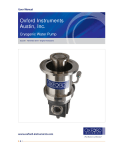
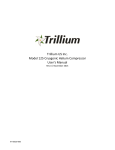

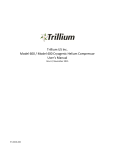
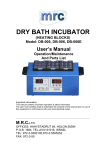
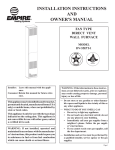
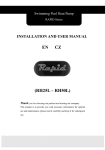

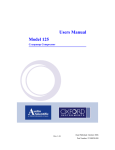
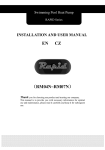


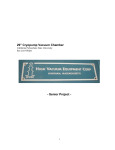
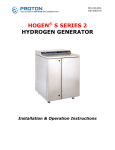


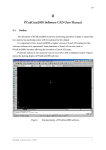
![[S3062PT-CPE] User`s Manual(Third Edition): CPE62PUE](http://vs1.manualzilla.com/store/data/005693507_1-69a1045bbc5cf41449359b406d2a53f2-150x150.png)
![[S30830T-CPE] Users Manual: CPE83SUE](http://vs1.manualzilla.com/store/data/005890174_1-2a1526c3cbd1c0db150881a0418c3ddc-150x150.png)

